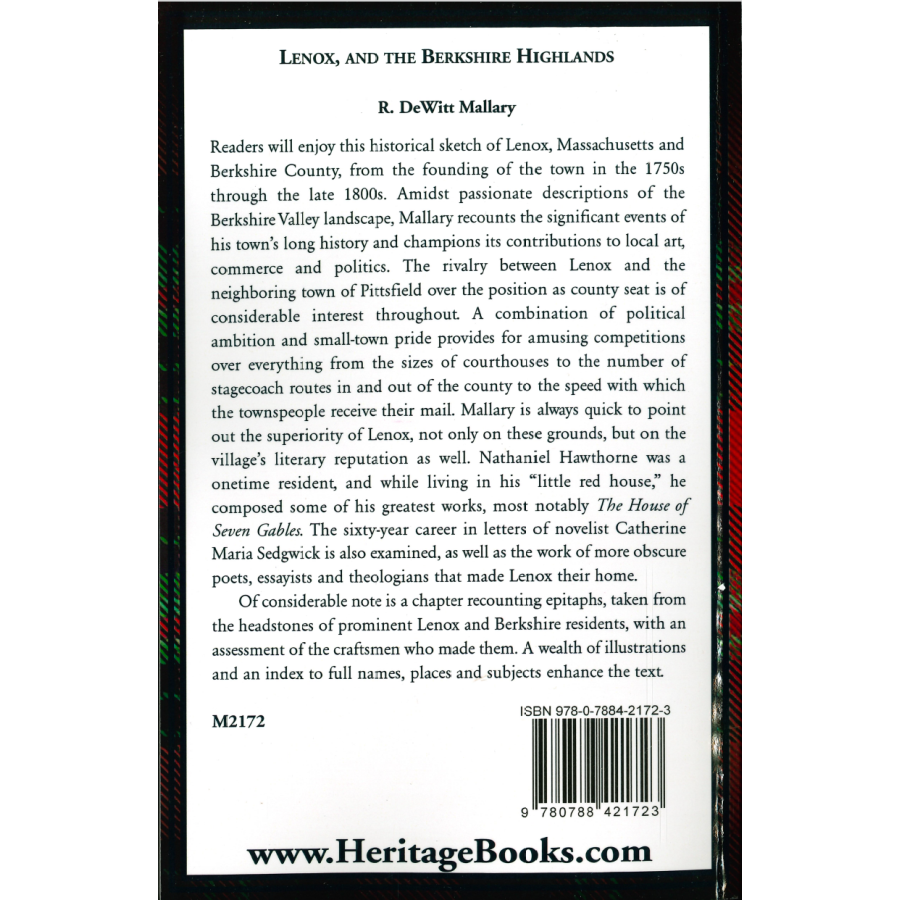Lenox, and the Berkshire Highlands
Couldn't load pickup availability
Readers will enjoy this historical sketch of Lenox, Massachusetts and Berkshire County, from the founding of the town in the 1750s through the late 1800s. Amidst passionate descriptions of the Berkshire Valley landscape, Mallary recounts the significant events of his town’s long history and champions its contributions to local art, commerce and politics. The rivalry between Lenox and the neighboring town of Pittsfield over the position as county seat is of considerable interest throughout. A combination of political ambition and small-town pride provides for amusing competitions over everything from the sizes of courthouses to the number of stagecoach routes in and out of the county to the speed with which the townspeople receive their mail. Mallary is always quick to point out the superiority of Lenox, not only on these grounds, but on the village’s literary reputation as well. Nathaniel Hawthorne was a onetime resident, and while living in his “little red house,” he composed some of his greatest works, most notably The House of Seven Gables. The sixty-year career in letters of novelist Catherine Maria Sedgwick is also examined, as well as the work of more obscure poets, essayists and theologians that made Lenox their home.
Of considerable note is a chapter recounting epitaphs, taken from the headstones of prominent Lenox and Berkshire residents, with an assessment of the craftsmen who made them. A wealth of illustrations and an index to full names, places and subjects enhance the text.
R. DeWitt Mallary
(1902), 2024, 5.5" x 8.5", paper, index, 430 pp.
ISBN: 9780788421723
101-M2172
